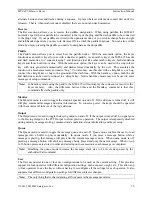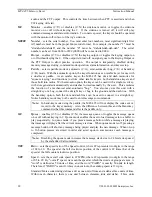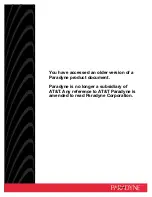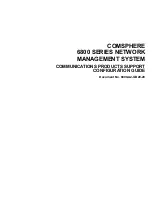
MFJ-495 Memory Keyer
Instruction Manual
14
©
2001-2009 MFJ Enterprises, Inc.
5 milliseconds, avoiding the "spikes" that cause distracting key clicks. The MFJ-495's audio sounds like
that of a good CW transceiver.
Keying Output
Sidetone Audio
Rise Time
Decay Time
Figure 8. Rise Time and Decay Time Timing.
Serial Number
The Serial Number menu allows you to set the current serial number from 0001 to 9999. Press the Up
and Down buttons to change number in increments of 1; press and hold the Up and Down buttons to
change number in increments of 100. Only three digits are sent for numbers below 1000—use leading
zeroes when appropriate. The serial number is automatically post-incremented each time it is sent. Serial
number 9999 will wrap-around to 0001, skipping 0000 since it is not used. Use Leading Zeroes, Other
Zeroes and Nines menus to control the way zeroes and nines in the serial number are sent (see below).
There are a four-digit number and three single characters on line two of the display. The four-digit
number enclosed within “[” and “]” is the serial number.
Leading Zeroes
The Leading Zeroes menu is used to set whether the leading zeroes in the serial number are sent as “0”,
“O”, “T” or not at all. There are a four-digit number and three single characters on line two of the
display. The character enclosed within “[” and “]” is the replacement for the leading zeroes in the serial
number.
Other Zeroes
The Other Zeroes menu is used to set whether the non-leading zeroes in the serial number are sent as “0”,
“O” or “T”. There are a four-digit number and three single characters on line two of the display. The
character enclosed within “[” and “]” is the replacement for the other zeroes in the serial number.
Nines
The Nines menu is used to set whether the nines in the serial number are sent as “9” or “N”. There are a
four-digit number and three single characters on line two of the display. The character enclosed within
“[” and “]” is the replacement for the nines in the serial number.
Iambic
The Iambic menu allows you to enable or disable iambic operation. Iambic operation allows you to
squeeze both paddles and get alternating dots and dashes. There are two different types of iambic keying,
and both are available. The difference in behavior of these two modes occurs when both paddles are
squeezed and then released. In iambic A mode, the keyer will simply complete the element (dot or dash)
in progress, and then stop sending. In iambic B mode, the keyer will complete the element in progress,
and then send an additional opposite element. For example, a release during the dash produces "dit-dah"
(A) in iambic A mode but produces "dit-dah-dit" (R) in iambic B mode. Non-iambic mode does not
















































